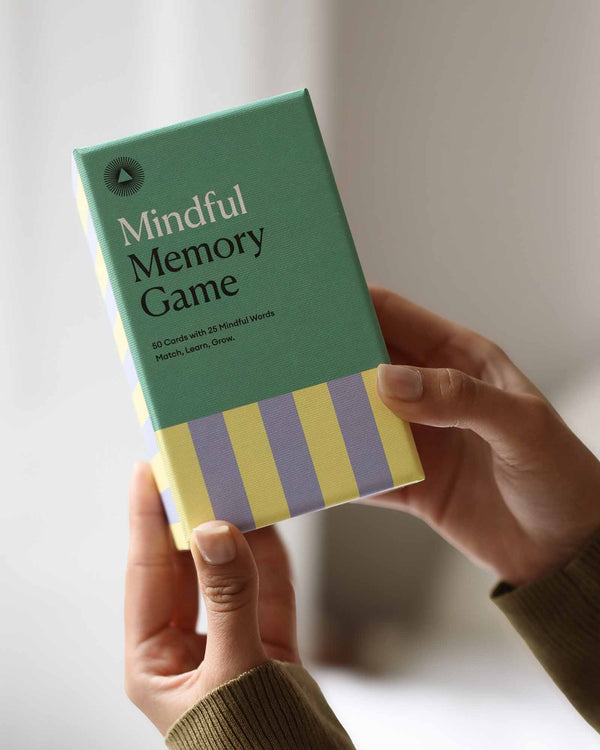Free Yourself From Old Narratives and Write a New One
by Intelligent Change
Who am I and who are you? What brings us to where we are now?
There are more than 7 billion people on this planet and more than 7 billion stories telling what it means to be alive here and now.
These stories are our narratives or as some like to call them–scripts.
They define the way we perceive ourselves and the world around us. Some aspects of our personal narratives help us move forward in life and make us feel good about ourselves, while others debilitate our efforts toward happiness.
What is your story? What are your first memories? Who are you at this moment in life? Where do you see yourself in five years?
The past, present, and future are all interconnected in forming the idea of who we are at any given moment in life.
How to embrace the empowering aspects of our narratives and rewrite those holding us back?
Who's the pilot?
According to Dr. Dan McAdams, the author behind the Narrative Identity Theory, people create narratives by internalizing every single major or minor experience in their evolving life story.
The reconstructed past and imagined future are all part of the present self-image and provide us with meaning and direction in life.
Our narratives begin to form even before our conception. Our parents develop fantasies about us before they even decide to take the next step and bring us to this world. The story further unravels while we’re still in our mom’s womb, only to take its final course when we’re finally here, an active piece of this world’s puzzle.
How is that?
Well, every single conscious or unconscious experience that we have is woven into our DNA and impacts the future course of our lives. Did our parents plan for one kid only to find out that they will have twins? Was the pregnancy stressful or pleasant? Were you a boy or a girl? The country, city, or neighborhood we were brought into, along with everything that followed over the course of our lives right until this point in time are all building blocks of who we think we are today.
The answer to the question of who writes the narrative is as simple as it is complicated: we are the main authors of our stories, but everyone else we encounter, along with everything we go through, co-authors the story.
Is this the story you want to tell?
The stories we tell to ourselves, our narratives, strongly impact the way we see life and this world, which is our mindset.
Nothing in this life is only black or white. The mindset is how we choose to frame situations.
The bad news is: people fall victim to their negativity bias, always noticing the bad things first. The good news is: we can consciously choose to step out of the negative mindset and strive towards a state of greater positivity.
Dan Sullivan calls this the gap.
You’ve landed a promotion, but the salary is lower than you expected. Do you celebrate your success and keep moving forward, or do you “stay in the gap” and stress over the salary?
Most people live their lives in the gap. A gap is a place of worries, anxieties, and a place where the negative aspects of our narratives perpetuate.
Doctor Carol Dweck compares the “fixed mindset” to the “growth mindset” to illustrate the difference between people who succeed at finding inspiration and seeing good even in the most challenging moments, and those who believe that their destinies are carved in stone, making any additional efforts towards change and progress futile.
It can all be summed up in one phrase: what you focus on, expands.
We notice things that are important for our narratives. Here is a very simple example: if you focus on sustainable living and invest in a new Tesla car, you’ll start noticing Teslas everywhere and hear conversations about the sustainable, eco-friendly future of the cars. No, it’s not that everyone suddenly decided to switch to clean energy and bought Teslas, they simply weren’t relevant to your narrative before.
If you’re in “the gap”, all your brain notices are things that are missing, no matter how well you’re doing in life. Perhaps these are all perpetuations of something more crucial that is missing within?
Are you telling your story the way you want it to be? Are there things you’d like to change? Are you focused on the things that empower you and help you move forward in life, or do you feel like your narrative is holding you back and keeping you stuck in life?
__________________
Writing a new narrative
case # 1
Lilly Diamond, the co-author of the book What’s Your Story, admits that it is incredibly difficult to be deeply honest with ourselves, and those spaces are often hard to tap into.
Lilly and her friend Rebecca Walker wrote this book as a diary for everyday evolution. It contains stories and prescriptions for living a fulfilled, creative life. Each chapter invites the reader to explore a different area of life, and helps them find the voice to “know, write, and speak their stories”.
Both authors went through a journey of self-discovery. Walker, a mixed-race young woman raised by radical feminists, grew up with the idea that motherhood is deeply disempowering for women and requires women to give up their freedom. This was an important aspect of her personal narrative.
However, she had a deep longing to become a mother, so the real challenge was to reconcile the radical feminist views that represented the building blocks of her personality, and her inner longing that opposed these views.
Being able to do this, to step out of the imposed scripts (no matter how progressive or liberating they actually are) in order to materialize your dreams is what “coming out from a gap”, or having a “growth mindset” is all about.
Case #2
Psychologist and entrepreneur Benjamin Hardy often tells his personal story to explain this shift. When he was a child, his parents divorced, and his father left them. He was a severely depressed drug addict. His whole life, Hardy felt rejected. He resented his father and saw himself as a victim of everything that happened.
Could he pick or influence the course of the events from his childhood? No. But could he rewrite the story as a grown-up? Yes.
That’s exactly what he did. After high school, he spent most of his days doing nothing, until one day it hit him: he was sick of feeling out of control. He enrolled in college, finished university, got married, started his own business. Today, he doesn’t resent his father anymore, he sees him in a completely different light.
What is the secret behind rewriting the narrative, actively participating in your script, exiting the gap, or changing your mindset? Three simple steps.
1. Getting more information
When we are kids, we form judgments and conclusions based on our extremely limited knowledge about the world and our limited cognitive capabilities. It’s normal that “little” brains can’t yet process everything that’s going on around them.
However, as we grow up, we learn to form concepts, gain experience, and discover new information. For the psychologist Benjamin Hardy, for example, one of the crucial vehicles of change was having conversations with his father as a grownup. Looking through his father’s eyes, he gained a completely fresh perspective. And while that’s not an excuse, it does shed light on the complexity of the situation and provides new meaning.
2. Finding the yin in the yang
Try to remember the five most difficult things to process and accept that happened to you, that shaped your life in this world and perhaps made you bitter.
Now, try to figure out if there was anything that you’ve learned from those experiences? What are the valuable lessons you’ve drawn from them? Is it possible that there’s more to these events than you thought?
Try to figure out how these experiences have shaped your identity, but this time, focus on the gains. Yes, these have been the five most unpleasant experiences you remember, but what are the strengths, opportunities, lessons, or traits that you’ve acquired throughout the struggle?
3. Practice gratitude
Practicing gratitude is more than just being thankful, it’s a lifestyle and a mindset. It’s the cornerstone of a positive outlook on your life and the crucial step towards accepting who you are and writing a new–real–narrative.
Some people meditate and think about the things they are grateful for in their lives. Others keep gratitude journals that allow them to nurture and cherish the special moments of every single day of their lives, no matter how challenging it gets.
Whatever you choose to do, keep in mind that there’s always something to be grateful for.
__________________
How to free yourself from the old narrative? Think, experience, be conscious and present in every waking moment, draw valuable lessons from every day, and don’t let minor setbacks define who you are.
We are not our experiences, we are what we learn from them and how we carry on with life.









